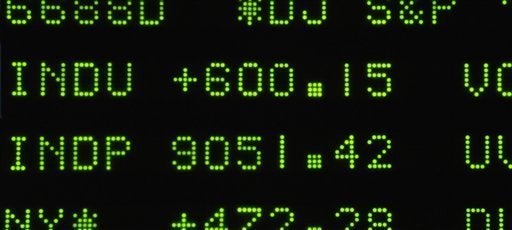
With a growing chorus of financial cheerleaders proclaiming that "green shoots" are sprouting, pointing to a bottoming out of the U.S. recession, the latest trade figures from the U.S. Commerce Department reveal contrary indicators.
American exports are continuing their decline; imports are also plummeting, but not as sharply as exports, contributing to a widening trade gap. In essence, the report on April's imports and exports describes an American economy that is in continuing decline, in the context of a synchronized global recession that shows no signs of abating.
In April, the U.S. trade deficit widened to $29.2 billion. Some will maintain that this figure is not so bad, since in the period before the onset of the Global Economic Crisis, the United States had even larger monthly trade gaps. Those who play down the significance of April's trade numbers miss the most essential point.
It is a combination of both the interest payments to foreign buyers of U.S. Treasury securities and the trade deficit that defines the nation's current account deficit. With a fiscal imbalance at an unprecedented number once thought in the realm of science fiction, adding a substantial annual trade deficit at a time when America is experiencing its worst economic and financial crisis since the Great Depression jeopardizes the prospects of any sustained recovery.
The United States is already projected to have a Federal budgetary deficit of $1.8 trillion in 2009, a figure that I believe will ultimately exceed $2 trillion, or approximately 15% of America's GDP. As is well recognized, the U.S. will have to borrow much of that deficit from overseas, resulting in ballooning payments to foreign holders of U.S. government debt instruments.
Similarly, when the U.S. imports far more than it exports, the nation must pay for the resulting trade deficit with dollars. So here we have a perfect fiscal storm; quantitative easing by the Federal Reserve, massive overseas borrowing by the Federal government to pay its basic operating expenses, and massive borrowing or printing of dollars to pay for imports not covered by the net value of America's exports.
It appears that the trade deficit for 2009 will likely exceed $300 billion. When added to a multi-trillion dollar U.S. government deficit, a figure not even inclusive of state, county and municipal deficits, the result is a fiscal imbalance that is unsustainable. In short, the current account deficit is exploding, when one aggregates the quantum leap in interest payments the U.S. taxpayers will be compelled to make to overseas creditors in addition to financing the widening trade imbalance.
Typically, a nation that is experiencing a major gap in exports versus imports that is beyond fiscal prudence will have no recourse but to facilitate the devaluation of its currency. The rationale is quite simple; a cheaper currency means your consumers will buy fewer imported goods, while the nation's exports become cheaper. In normal fiscal times, that might be a prudent course to follow.
However, as strong market forces are already weakening the U.S. dollar, any policy response designed to further depreciate the value of America's currency will destroy much of the value of U.S. Treasuries held by sovereign creditors, in particular China. Yet, the U.S. trade imbalance combined with other economic and financial forces will inevitably devalue the dollar, which in turn will lead to heightened tensions between the United States and its primary foreign creditors.
It just may be that April's trade figures are a leading indicator of a pending catastrophic collapse in the value of the U.S. dollar, a fiscal calamity that will add immeasurably to the financial and economic woes of the United States and the global economy. Green shoots? More like black clouds, at least to this observer.
